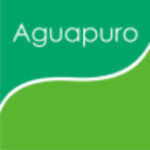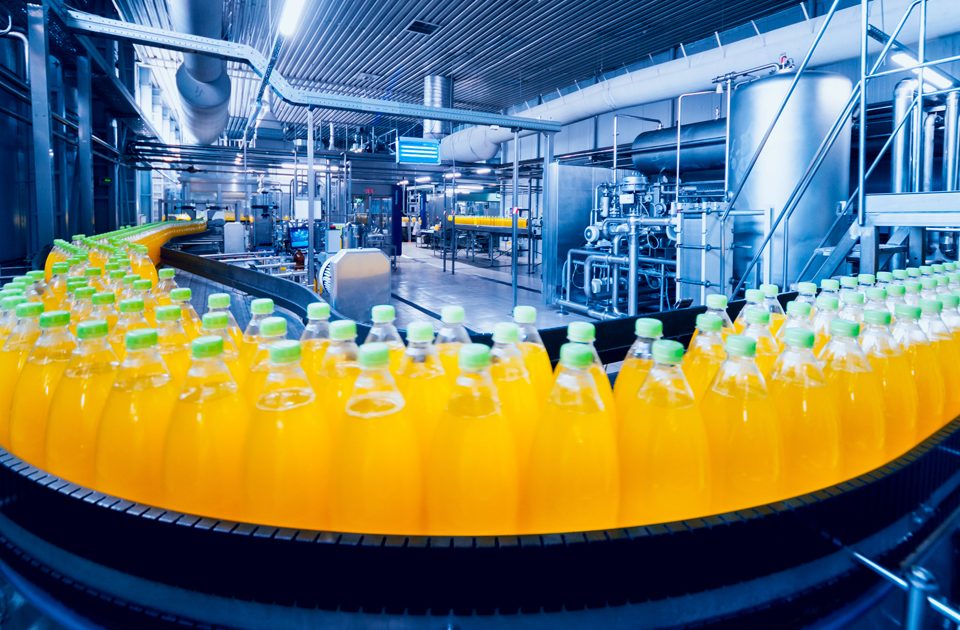Top 5 Benefits of Sustainable Water Treatment Solutions for Businesses
June 7, 2025
Exploring Different Types of Water Purification Technologies: Which One is Best for You?
June 7, 2025The Future of Water Purification: Emerging Technologies and Innovations
Welcome to the exciting realm of water purification, where science and innovation join forces to ensure a cleaner, healthier future for all. In this blog post, we will dive into the latest technologies and innovations shaping the way we purify one of our most precious resources. From nanotechnology to smart integrations, get ready to explore how advancements are revolutionizing the landscape of water treatment. Let’s embark on a journey towards a brighter tomorrow with emerging technologies in water purification!
Current Methods of Water Purification
Water purification is essential in ensuring safe drinking water for communities worldwide. Current methods of water purification vary from simple filtration to advanced chemical treatments. Filtration, using materials like sand or activated carbon, is a common method that helps remove impurities and particles from water. Chlorination is another widely used technique where chlorine is added to kill harmful bacteria and viruses present in the water.
Reverse osmosis is a sophisticated process that involves forcing water through a semipermeable membrane to remove contaminants. UV radiation technology utilizes ultraviolet light to disinfect water by deactivating microorganisms such as bacteria and viruses. Additionally, ozonation introduces ozone gas into the water to eliminate organic impurities and pathogens.
Each method has its strengths and limitations depending on the quality of the source water and specific contaminant levels present. Continuous research and innovation are paving the way for more efficient and sustainable solutions in the future of water purification technologies.
Challenges with Traditional Water Purification Methods
Traditional water purification methods, while effective to a certain extent, face various challenges in providing clean and safe drinking water. One common issue is the use of chemicals such as chlorine or iodine, which can leave behind harmful byproducts in the treated water. Additionally, conventional filtration systems may not always effectively remove all contaminants or pathogens, leading to potential health risks for consumers.
Another challenge lies in the high energy consumption associated with traditional purification processes. Boiling water, for example, requires significant amounts of fuel or electricity. This not only contributes to environmental pollution but also makes it less feasible for communities with limited resources to access clean water.
Furthermore, the infrastructure required for large-scale implementation of traditional purification methods can be costly and difficult to maintain in remote areas or developing regions. As populations grow and climate change exacerbates water scarcity issues globally, finding innovative solutions becomes imperative to ensure sustainable access to clean drinking water for all.
Emerging Technologies in Water Purification:
Water purification is evolving rapidly, with emerging technologies at the forefront of innovation. Nanotechnology plays a pivotal role in this advancement by utilizing tiny particles to remove contaminants on a molecular level. This cutting-edge approach enhances water quality and efficiency.
Solar-powered systems are also revolutionizing water purification methods by harnessing renewable energy sources to operate filtration processes sustainably. These eco-friendly solutions offer a greener alternative to traditional energy-intensive methods.
Advanced filtration methods like membrane technology and electrocoagulation are pushing boundaries in purifying water more effectively than ever before. By leveraging intricate processes, these technologies remove impurities efficiently, ensuring safe drinking water for communities worldwide.
The future of water purification lies in these emerging technologies, each contributing unique advantages towards achieving cleaner and healthier water sources globally.
A. Nanotechnology
Nanotechnology has revolutionized the field of water purification by leveraging tiny particles for efficient filtration. These nanoparticles possess unique properties that enhance the removal of contaminants from water sources. By utilizing materials at the nanoscale, such as carbon nanotubes or titanium dioxide, researchers can create highly effective water treatment systems.
One key advantage of nanotechnology in water purification is its ability to target specific pollutants with precision. This targeted approach results in improved efficiency and reduced energy consumption compared to traditional methods. Additionally, nanomaterials have a large surface area relative to their size, allowing for enhanced adsorption of impurities in water.
Moreover, nano-based membranes offer superior permeability and selectivity, enabling them to separate even smaller particles from water effectively. As research continues to advance in this area, we can expect further innovations that will drive the future of clean drinking water solutions worldwide.
B. Solar-Powered Systems
Solar-powered systems are revolutionizing water purification methods by harnessing the abundant energy from the sun. These innovative technologies utilize solar panels to power water treatment processes, making them sustainable and cost-effective solutions for clean water access in remote areas. By converting sunlight into electricity, solar-powered systems can operate independently without relying on traditional grid power sources.
The use of solar energy in water purification not only reduces carbon emissions but also minimizes operational costs over time. This eco-friendly approach aligns with the growing emphasis on sustainability and renewable energy practices worldwide. Solar-powered systems offer a reliable alternative for communities facing limited access to clean drinking water by leveraging natural resources efficiently.
With advancements in technology, solar-powered systems continue to evolve, becoming more efficient and accessible for various applications. The integration of solar panels with innovative filtration techniques enhances purification capabilities while promoting environmental stewardship. As we look towards the future, these sustainable solutions hold immense potential in addressing global water challenges effectively and responsibly.
C. Advanced Filtration Methods
Advanced filtration methods are revolutionizing the way we purify water. These cutting-edge technologies go beyond traditional filtration systems to remove even the tiniest impurities from water sources. By utilizing innovative materials and techniques, advanced filters can effectively eliminate contaminants such as bacteria, viruses, and microplastics.
One notable advancement in this field is the development of membrane filtration technology. These membranes consist of ultra-thin layers that act as barriers to pollutants while allowing clean water to pass through. Another promising approach is the use of activated carbon filters, which absorb organic compounds and chemicals present in water.
By continuously improving filtration processes, researchers are making significant strides towards ensuring access to safe drinking water for all. With ongoing advancements in this area, the future of water purification looks brighter than ever before.
Innovations in Water Purification:
Innovations in water purification are shaping the future of clean water accessibility. Portable and on-demand systems have revolutionized the way we approach water treatment. These compact solutions provide flexibility for individuals and communities to purify water anytime, anywhere.
Smart technology integration is another game-changer in the field of water purification. By incorporating data analytics and automation, smart systems can optimize efficiency and performance. This seamless integration enhances monitoring capabilities and ensures consistent delivery of safe drinking water.
As we continue to push boundaries in innovation, the possibilities for advancing global access to clean water are expanding. These breakthroughs not only address current challenges but also pave the way for a more sustainable future where everyone has equal opportunities to access safe and clean drinking water.
A. Portable and On-Demand Systems
Portable and on-demand water purification systems are revolutionizing access to clean drinking water worldwide. These innovative technologies allow for convenient purification of water in remote locations, during emergencies, or even while traveling.
Imagine having the ability to purify contaminated water instantly, ensuring safe hydration wherever you go. Portable systems are compact, lightweight, and easy to carry – making them ideal for outdoor activities such as camping or hiking.
These systems typically utilize advanced filtration methods or chemical treatments to remove impurities and pathogens from water sources quickly and efficiently. With portable solutions becoming more affordable and accessible, individuals can now take control of their water quality without relying on centralized infrastructures.
Whether it’s for personal use or humanitarian aid efforts in disaster-stricken areas, portable and on-demand systems play a crucial role in promoting health and sustainability by providing clean drinking water anytime, anywhere.
B. Smart Technology Integration
Imagine a world where water purification systems are seamlessly integrated with smart technology, revolutionizing the way we access clean drinking water. Smart sensors can monitor water quality in real-time, ensuring that contaminants are detected and removed promptly. These innovative solutions allow for proactive maintenance and efficient use of resources.
Smart technology integration also enables remote monitoring and control of purification systems, making it easier to manage water treatment processes from anywhere at any time. By harnessing the power of data analytics and machine learning, these systems can optimize performance and enhance overall efficiency.
With advancements in artificial intelligence and IoT devices, smart water purification technologies offer a glimpse into a future where clean drinking water is not just a basic necessity but a sustainable reality for all. The integration of smart technology paves the way for improved reliability, cost-effectiveness, and environmental sustainability in water purification methods.
Implications for Sustainability and Global Access to Clean Water
As we look towards the future of water purification, it is clear that emerging technologies and innovations hold immense promise in addressing the challenges we face today. The implications for sustainability and global access to clean water are profound. By harnessing nanotechnology, solar-powered systems, advanced filtration methods, portable on-demand systems, and smart technology integration, we are paving the way for a more efficient and effective approach to water purification.
These advancements not only offer hope for cleaner drinking water but also have far-reaching impacts on environmental conservation and public health worldwide. With continued research and development in this field, we can strive towards a future where everyone has access to safe and reliable sources of clean water.
The journey towards sustainable water purification solutions may be ongoing, but with dedication and innovation driving us forward, a brighter future awaits—one where clean water is not just a privilege but a fundamental human right for all.

